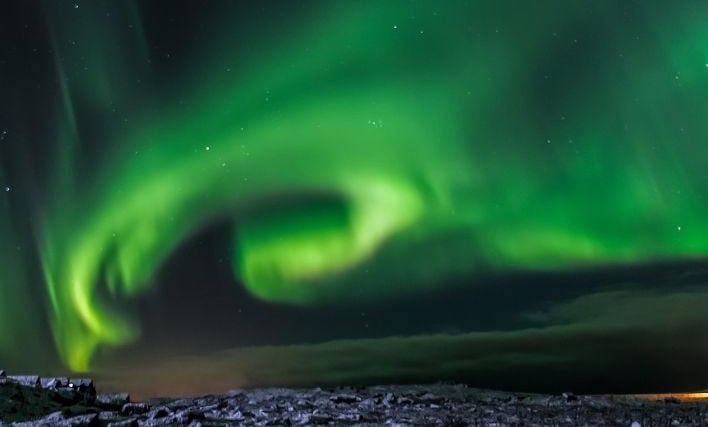Seems like
we've been on a northern lights roll lately, haven't we? There's one happening again tonight and the NOAA is even promising how the spectacular aurora display will be visible as far south as New York and Wisconsin. Forecasts say that a significant burst of solar activity colliding with Earth’s magnetic field will be creating the sky gazing opportunity in regions where they're typically a once-a-year or even rarer event.
Like practically all northern (or should we add southern now?) lights, they result from a combination of space weather factors. The primary driver is a
coronal hole high speed stream (CH HSS), which is a vast, dark region on the Sun that spews fast-moving solar wind into the ether. This stream, coupled with the potential influence of a weak Coronal Mass Ejection (CME) that arrived on October 27, is expected to significantly increase solar wind speeds.
The collision between this fast solar wind and Earth's magnetosphere will cause geomagnetic activity to fluctuate between active and storm levels, pushing the phenomenon far south. The National Oceanic and Atmospheric Administration’s (NOAA) Space Weather Prediction Center anticipates that the planetary Kp geomagnetic disturbance index will reach up to Kp 5 today. (Kp 5 generally marks the threshold necessary for visibility on the northern horizon in states like Wisconsin and others along the northern US border.)
In total, up to 14 U.S. states could catch a glimpse of the shifting curtains of light, offering hope to many who would typically have to travel much farther north. Locations in the Midwest, especially the northern areas of Wisconsin (such as those bordering Lake Superior or the low light-polluted skies of Door County's Newport State Park), offer the best chances. Even cities farther south may catch a faint glow if the storm reaches its G2 potential.
It goes without saying that aurora hunters should aim to find a dark location with an unobstructed view of the northern horizon, far away from city lights. Patience is key, as the
auroras can come in waves and may be faint at first. The most promising viewing window will be during the darkest part of the night, from 11 p.m. (28th) to 2 a.m. (29th) local time.


